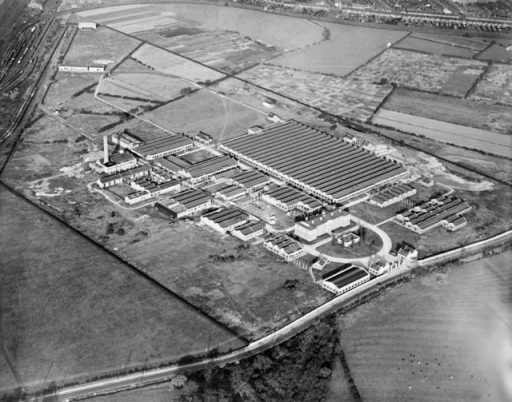The military historian and broadcaster, Dan Snow, is calling on people around Britain to help locate the sites of ‘missing’ munitions factories which employed thousands of women during the First World War.
Making the appeal, he said: “Often, very little of the original fabric of the buildings survives so local knowledge is a critical source of information for our national and local records to help us do justice to this chapter of our history.”
The call comes as part of Home Front Legacy 1914-18, a project led by the Council for British Archaeology (CBA) to identify and preserve unrecorded First World War sites across the UK before they are lost forever.
Volunteers are being asked to identify munitions factory locations, with the aid of contemporary maps, plans, documents and photos. Former sites or existing physical remains can then be photographed and recorded, using the Home Front Legacy app.
Pinpointing the 170 sites is sometimes difficult because premises were often adapted for war work, rather than being purpose built.
Dan Snow (above), President of the CBA, explained: “Local knowledge can really open up our understanding of the tremendous impact on our towns, villages and countryside of gearing up our country to go to war.
“There was extensive activity on home soil before and during the Great War, but many of the sites and buildings associated with the home front are little known and vulnerable.
“By recording these sites, local people can preserve our stories before they are lost, so that future generations can understand how the momentous events of 1914-18 affected our families and changed life in Britain for ever.”
English Heritage’s military expert, Wayne Cocroft, said the results would be combined with archaeological research “to do justice to this chapter of our history in bricks and stone.”
The ‘missing’ factories:
*HM Explosives Factory Colnbrook (Belgian government guncotton works)
*National Filling factories at: Abbey Wood no. 11 (Kings Norton Metal Co.) & Southwark no. 8 (Sumner street)
*Trench Warfare Filling Factory Fulham (Stevenage Road)
*National Small Arms Ammunition Factory Coundon (Coventry) – a very small factory that employed only 78 people
*Chemical Warfare Factory Langley (Birmingham)
*National Gauge Factories at: Croydon (Gloucester Road, Vidal Engineering Co.) & Kilburn (Fairfax Yard)
*National Tool Factory Gateshead (Coulthards Lane)
*National Salvage Depots, where material recovered from battlefields was sorted and repaired for re-use. Often located in ports, we are hoping to track down sites at: Blyth, Immingham, Ridham & Trafford Park
*National Cartridge and Box Repair Factory, Dagenham Dock
*National Gun Carriage Repair Factory Southampton (Empress Road)
*National Box Factories at: Castleford, Leeds (J H Abrahams Ltd Wellington Strret), Letchworth, Liverpool (Brasenose Road Bootle), Luton, Woolwich (Watt Torrance and Co. Trinity Street), Guildford (Walnut Tree Close) & Maidstone
*Willesden (Park Royal) Non-returnable Box Depot
*National Steel Billet Breaking Factory Trafford Park
*Cotton Waste Mills, used to process cotton waste for the manufacture of explosives. Typically these were existing Textile mills. We are seeking information on:
*Cloughfold Mills in Rawtenstall
*Hall’s Mill in Whaley Bridge.
*National Fuse Filling Factory, Chaul End, Bedfordshire. This had a special railway station was built for the workers. The station is now disused but its location is recorded, however where the factory lay in relation to the station is still unknown
How to get involved:
A resource pack for volunteers, including an online recording form and app, guidance on recording First World War sites and buildings and a directory of heritage services and resources is available on the Home Front Legacy website.
‘Home Front Legacy 1914-18,’ led by the Council for British Archaeology, is funded and supported by English Heritage, Historic Scotland and the Welsh Government’s conservation service Cadw.
Source: Council for British Archaeology
Images courtesy of Britain from Above/English Heritage (National Machine Gun Factory); Peter Alhadeff, Centenary News (Dan Snow)
Posted by: Peter Alhadeff, Centenary News
